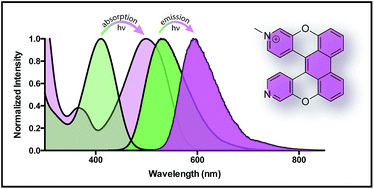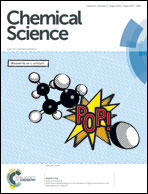Synthesis and properties of lysosome-specific photoactivatable probes for live-cell imaging†
Abstract
Fluorescent dyes have become increasingly important in cell biology since they enable high signal-to-noise and selectivity in visualizing subcellular organelles. Photoactivatable dyes allow for tracking and monitoring of a subset of cells or organelles. Here, we report the synthesis and application of a new class of large Stokes shift fluorescent dyes that are water-soluble, cell permeable, non-cytotoxic, and lysosome-specific. Additionally, we demonstrate temporally controlled sequential photoactivation of individual cells in close spatial proximity.


 Please wait while we load your content...
Please wait while we load your content...